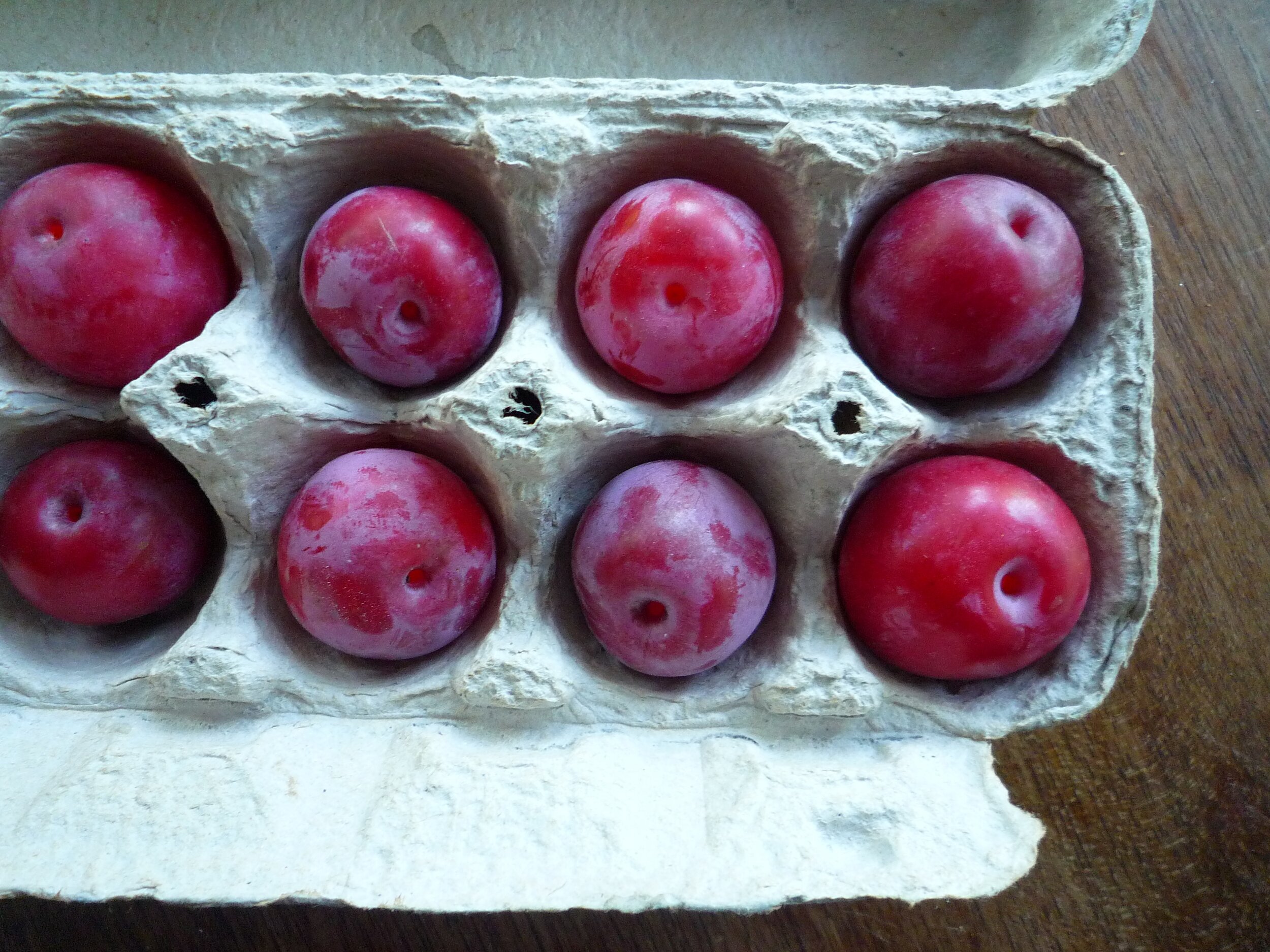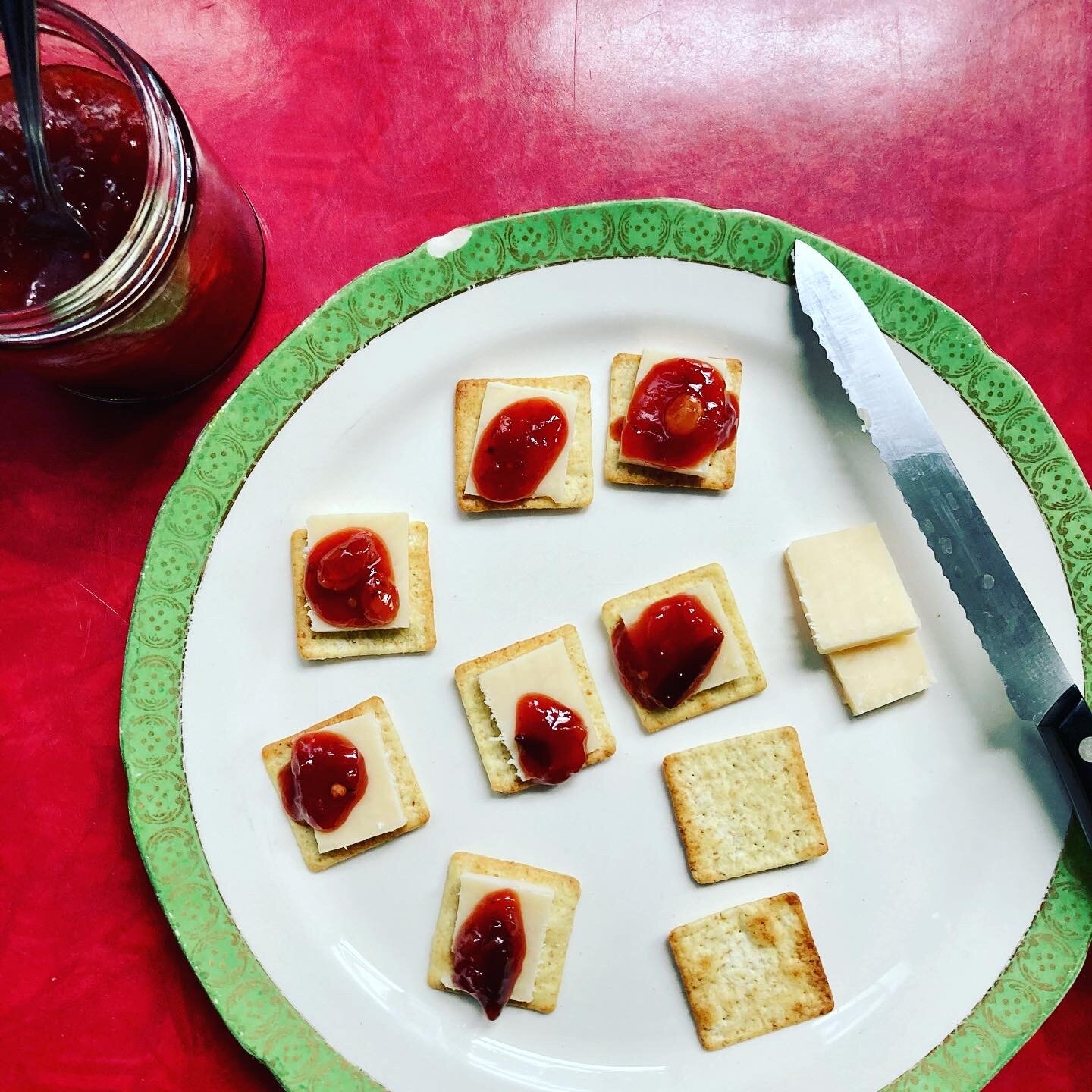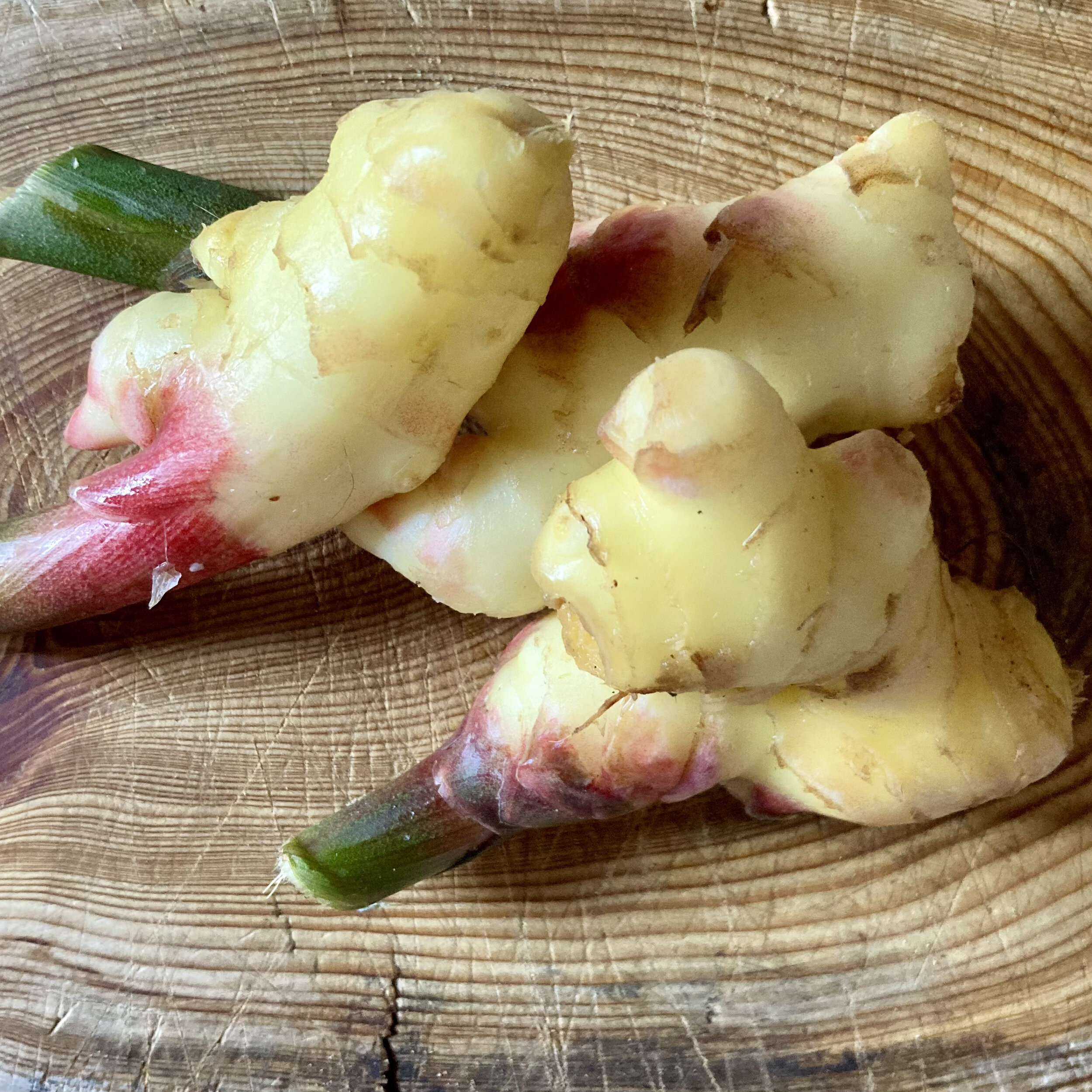fig. a: free-range plums
Let’s just say you’ve managed to find yourself some lovely early fall plums. It’s not difficult these days—there are still a lot of Italian prune plums around.
And let’s say you’re a fan of chutney.
If you’ve never had it before, plum chutney is truly one of the world’s great preserves, and an absolute joy as part of a cheese platter, especially when served with a sharp cheddar. And if you’ve never made it before, it’s very easy to prepare, and incredibly satisfying.
For my latest batch, I started off by using the basic method from “Micro-batch Jellies & Jams.” I bought 3 litres of plums at the farmers’ market. I halved them and pitted them. I weighed them and then added 40% of their weight in sugar, mixed everything thoroughly and allowed them to macerate in the refrigerator.
The next day, after they’d released their juices, I turned to Nigel Slater’s Hot, Sweet Plum Chutney recipe. You can find it in Ripe. You can also find it on the Serious Eats website. Though I made a few fairly significant changes, I used Slater’s recipe as my blueprint.
The thing is, though Slater’s recipe has a bit of spice to it, I wanted my batch to be even kickier. I wanted it to have some of the fire & brimstone of Devil’s Chutney. So I bumped up the chilies and added a habañero to the mix. I also added some ginger. The results were XXXactly what I was looking for.
XXXtra Spicy Plum Chutney
3 litres of plums
1 tbsp neutral cooking oil, such as canola
1/2 vidalia onion
l nub ginger, peeled and minced
1 sweet red pepper, finely chopped
1 habañero pepper, minced
1 clove garlic, minced
1-2 dried red chilies (preferably arbol, or something similar)
3/4 cup golden raisins
2 tsp yellow mustard seeds
2/3 cup apple cider vinegar
2/3 cup red wine vinegar
black pepper
salt
Heat oil over medium in a large-ish flat-bottomed saucepan and sauté the onion for a few minutes until beginning to turn transparent. Add ginger, chopped sweet and hot peppers, and garlic. Sauté for another minute or two. Add dried chilies (I used 2), raisins, mustard seeds, vinegars, and a healthy dose of freshly ground black pepper.
Bring to a boil, turn down to low and simmer gently for an hour. Adjust the seasoning with salt and sugar (if necessary).
Sterilize your jars and lids.
Continue to simmer gently for another 30 - 60 minutes. Check to see if the chutney has achieved a proper set. You can do so by running a rubber spatula across the bottom of the saucepan with a swift motion. If the chutney parts momentarily allowing you to see a swath of stainless steel, your chutney is ready to can.
Think of yourself as Moses parting the Red Sea. If that sounds preposterous, possibly even sacrilegious, think of yourself as Charlton Heston pretending to be Moses parting a Red Sea of chutney.
When you’ve achieved a proper set, taste your chutney one last time, and adjust the seasoning as needed.
When your chutney is à point, spoon the chutney into your sterilized jars and seal.
My batch made nearly 5 x 250-ml jars.
Within hours, i’d already busted into one of my jars for my first cheese & chutney platter of the season.
fig. b: cheese, chutney, crackers 1
fig. b: cheese, chutney, crackers 2
XXXtra Spicy Plum Chutney is delicious with cheese and crackers. It’s also fantastic with curries of all kinds. And if all that wasn’t enough, it’s lovely with a wide variety of meat & game, including turkey and pork chops.
This chutney is absolutely, perfectly to my liking. Sweet, savoury, piquant. If you want it even more fiery—devilishly so—make your own adjustments. Add some more dried red chilies and/or another habañero chili or two. Or cut to the chase and add a 1/4 teaspoon of cayenne.
aj















